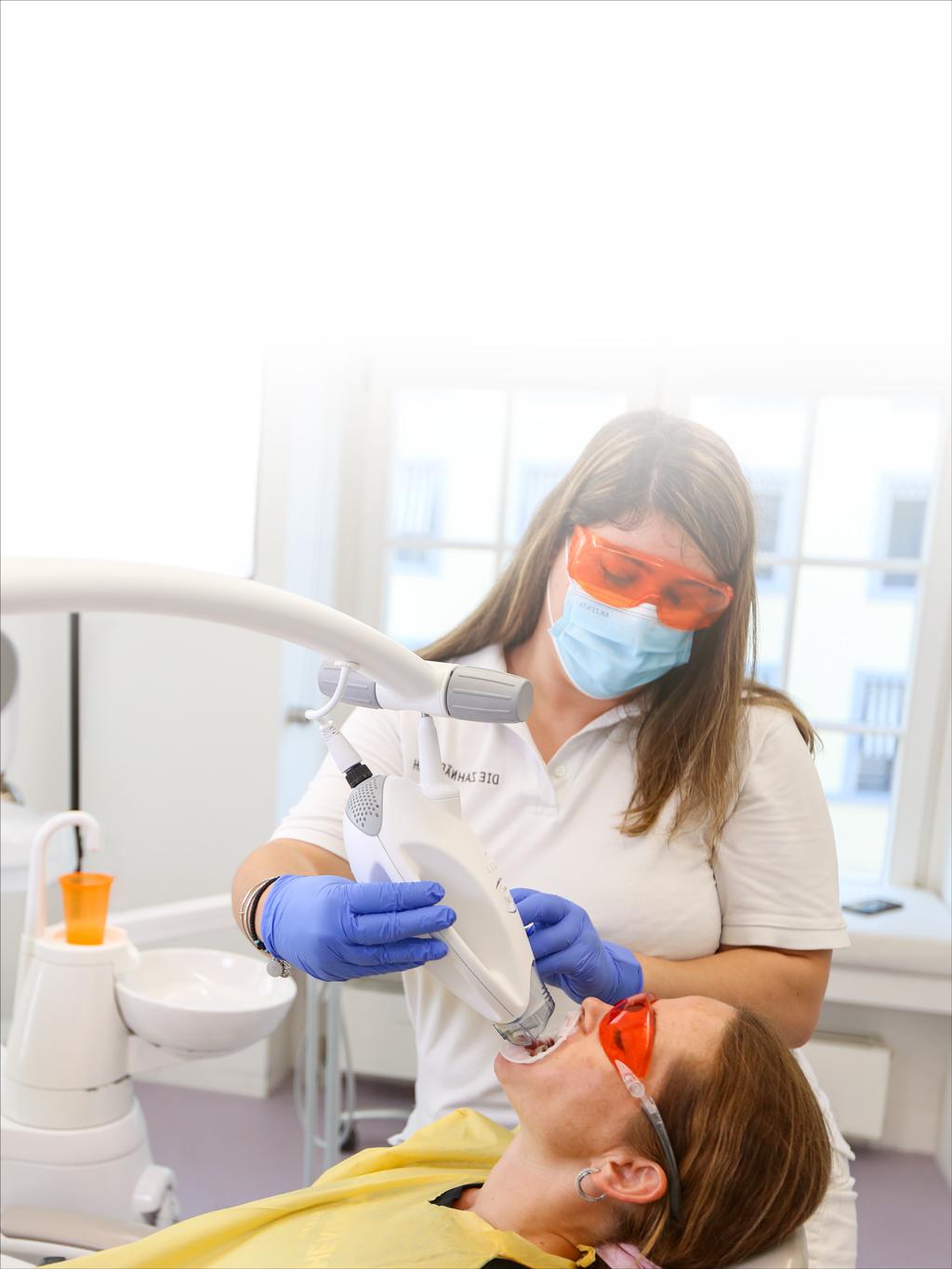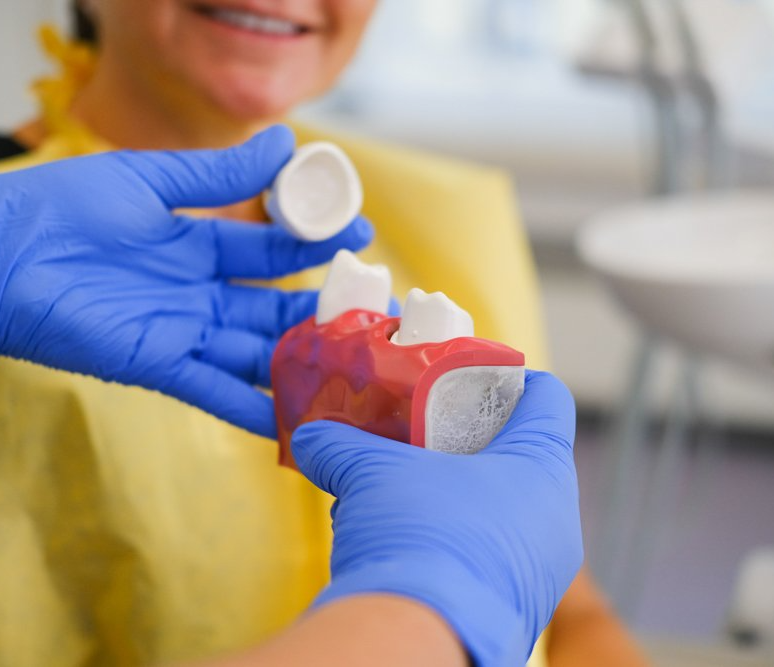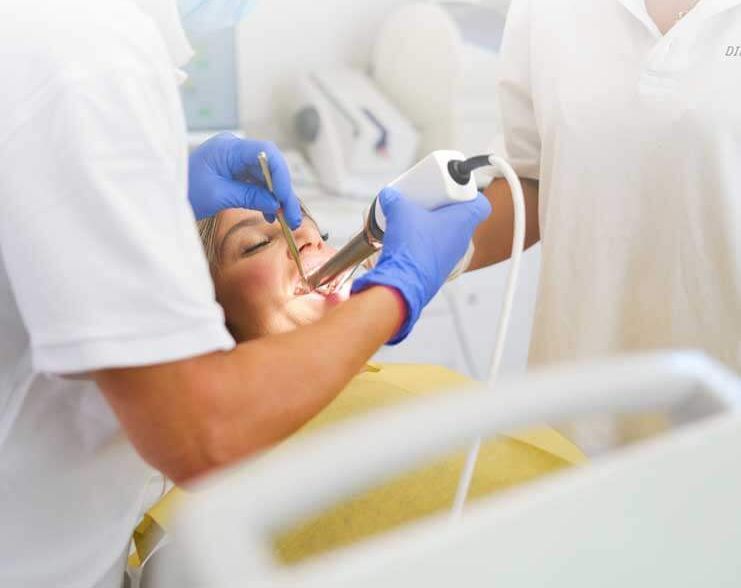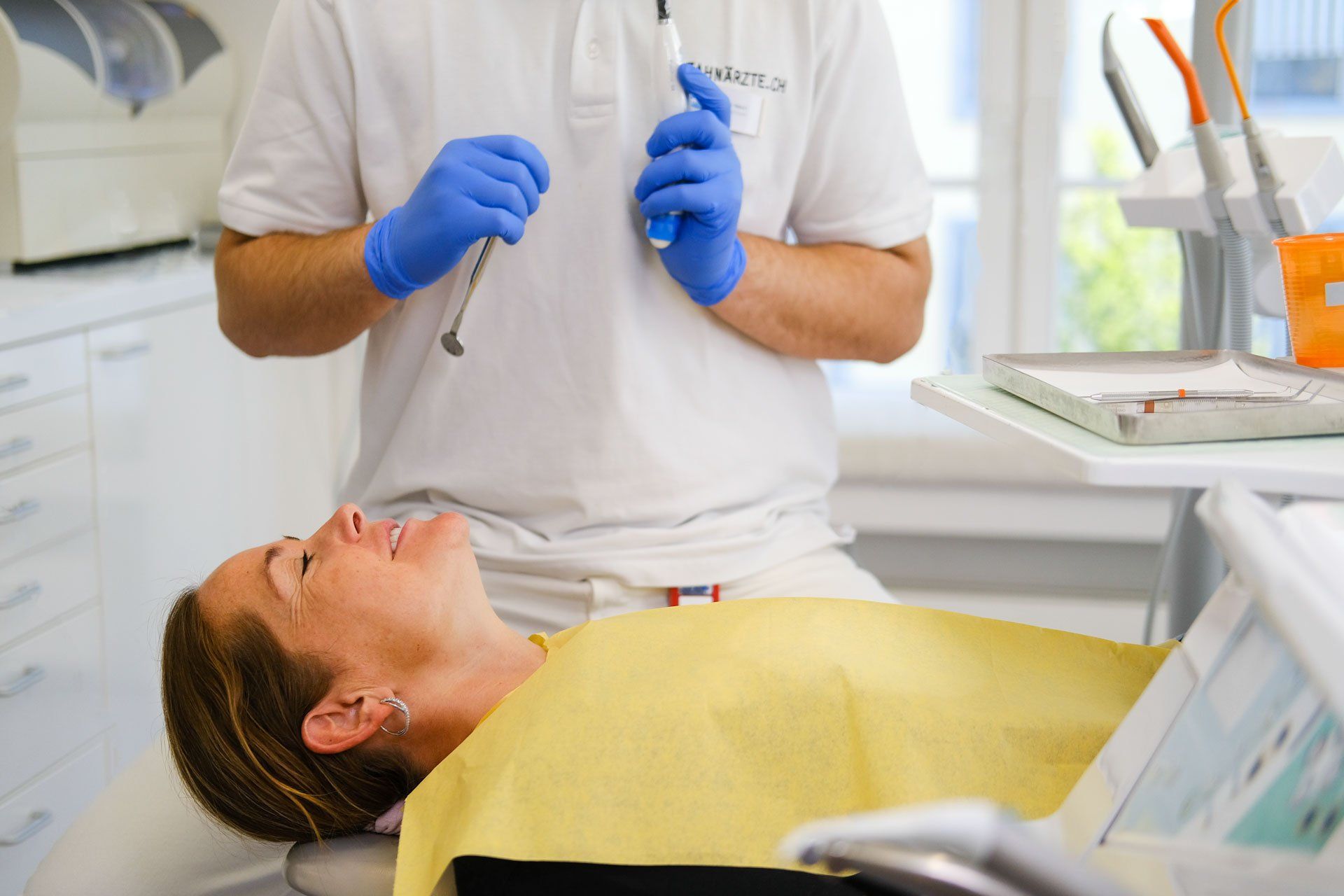Connection between oral health and heart disease.
Oral hygiene is not just about aesthetics; it is directly linked to overall health. Diseases like periodontitis can not only affect the tooth-supporting structures but also impact the cardiovascular system, as scientific research shows. This interaction can increase the risk of a heart attack or stroke.
Good oral hygiene can therefore not only help preserve teeth but also prevent serious systemic diseases.
This article explores the connections between oral health and cardiovascular diseases, explaining the risk factors and signs of illness. We will focus particularly on periodontitis and diabetes mellitus.
The role of the oral flora in gum inflammation.
There are countless bacteria in the oral cavity, which maintain a delicate balance with each other. The gums, the tooth-supporting structures, and the entire oral microbiome are protected by a healthy oral flora.
However, if this balance is disrupted, it can lead to gum inflammation and more serious diseases.
To stop inflammatory processes early, thorough oral hygiene and professional care by a dentist are essential.
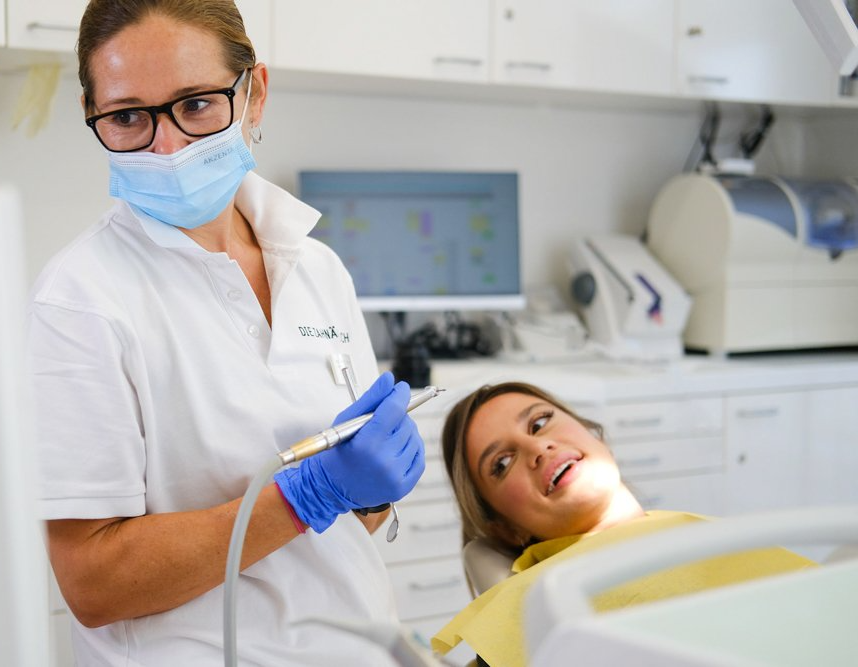
What is Periodontitis?
Periodontitis is a chronic inflammation that, in the worst case, can lead to tooth loss if left untreated. The cause is bacteria in the dental plaque that trigger an inflammation of the gums. This is also referred to as gingivitis in medical terms. If left untreated, the inflammation spreads further.
Cardiovascular diseases and periodontitis
The influence of inflammatory processes on the cardiovascular system is particularly problematic. In periodontitis, bacteria from the deep gum pockets are released.
Periodontitis is closely linked to cardiovascular diseases because the inflammatory processes can enter the bloodstream and lead to a strain on the cardiovascular system. Numerous studies have shown that this results in an increased risk of heart attacks in patients.
Moreover, they can generally trigger a chronic inflammation, which carries additional risks for cardiovascular diseases. People with periodontitis, therefore, also have an increased risk of stroke.
Diabetes mellitus and periodontitis
There is a close interaction between diabetes mellitus and periodontitis. People with type 1 or type 2 diabetes are more likely to develop periodontitis.
The growth of bacteria that promote gum diseases is encouraged by high blood sugar levels. At the same time, an existing periodontitis makes blood sugar regulation more difficult and can worsen the course of diabetes.
Injuries also heal more slowly in people with diabetes, which promotes the spread of infections.
Therapy can help stabilize blood sugar levels. Regular visits to the dentist, thorough oral hygiene, and close cooperation with the diabetologist are crucial.
Diabetics should watch for signs like gum bleeding, bad breath, and gum recession and respond early.
To make the interdisciplinary cooperation between medicine and dentistry more efficient, various approaches have already been developed, such as a guideline for diabetes and periodontitis. Among those involved were the chief physician of the Diabetes Center Mergentheim, Prof. Dr. med. Thomas Haak, and Prof. Dr. med. Dr. med. dent. Søren Jepsen from the University Hospital Bonn.
Other risk factors for periodontitis
In addition to people with diabetes, there are other risk groups and factors.
- Oral hygiene: Poor oral hygiene leads to plaque formation, which allows bacteria to grow.
- Smoking: Nicotine worsens blood circulation in the gums and weakens the immune defense against bacteria in the mouth.
- Genetic predisposition: Some people are genetically more susceptible to gum diseases than the average population.
- Stress: Chronic stress also weakens the immune system and promotes gum inflammation.
- Hormonal changes: During pregnancy and menopause, the gums become more sensitive and are more prone to periodontal diseases.
- Nutrition: A sugar-rich diet promotes bacterial growth and increases the risk of gingivitis.
- Age: Natural changes in the tooth-supporting apparatus increase the risk of periodontitis with age.
- Medications: Taking certain medications reduces saliva production and increases the risk of gum bleeding and dry mouth.
Signs of periodontitis.
Depending on the progression of the disease, various signs of periodontitis can be observed in the mouth.
Gum Bleeding
Bleeding gums when brushing teeth or eating is often the first warning sign of a gum disease. Healthy gums should not bleed when pressed or touched, so repeated bleeding indicates the onset of inflammation. Occasional gum bleeding, however, is completely normal.
Gum Inflammation
If the gums are red, swollen, or sensitive, it indicates an inflammatory reaction, typically caused by bacteria. This gum inflammation (gingivitis) is a precursor to periodontitis and must be treated by a dentist.
Bad Breath
Bacteria that multiply in the gum pockets release sulfur compounds, causing persistent bad breath. These odor-causing substances are a typical characteristic of advanced periodontitis. However, it should be differentiated, as there are also numerous other reasons for bad breath.
Gum Recession
The gums gradually recede. As a result, the teeth appear larger and become more sensitive to external stimuli. Gum recession is often a sign of advanced periodontitis, which weakens the supporting structures of the teeth.
Sensitive Teeth
Exposed tooth roots can cause pain when eating cold, hot, or sweet foods. The cause is the loss of the protective enamel layer, allowing stimuli to directly reach the nerve pathways.
Loosening of Teeth
In the course of periodontitis, there is a breakdown of connective tissue and jawbone, leading to the continuous loosening of the teeth. If the inflammation remains untreated, the supporting structures of the teeth can be so damaged that teeth may even fall out.
Gum Pockets
Due to inflammation, deep pockets form between the gum line and the tooth, where bacteria can multiply unchecked. These gum pockets are difficult to clean and provide an ideal breeding ground for harmful germs. In severe cases, pus may accumulate, which should be treated urgently.
Pain While Chewing
A common sign that periodontitis has spread to deeper tissue layers is pain or sensitivity when chewing. The inflammation weakens the supporting structures of the tooth, causing it to lose stability and react sensitively to pressure.
Change in Tooth Position
This is the result of the jawbone receding due to chronic inflammation. Especially in advanced periodontitis, this can lead to noticeable shifts, which can affect chewing and speaking.
Prevention and Treatment of Periodontitis
A consistent oral hygiene routine is the best protection against the development of periodontitis. Brushing your teeth daily with fluoride toothpaste removes plaque and significantly reduces the risk of periodontitis.
To remove bacteria from between the teeth, dental floss or interdental brushes should also be used.
Regular visits to a dentist are important because a professional teeth cleaning removes stubborn plaque and improves oral hygiene.
In addition to dental care, diet is also essential. A vitamin-rich and low-sugar diet strengthens the gums and protects against inflammation.
Smoking, on the other hand, significantly increases the risk of periodontitis. Nicotine worsens blood circulation in the gums and weakens the immune system. Quitting can promote healing and improve overall health.
Quick response
The key is a quick treatment once periodontitis has already developed. The dentist removes harmful bacteria from the gum pockets through a deep cleaning to control the infection. In severe cases, antibiotics are additionally used. To stabilize the tooth bed and prevent tooth loss, surgical procedures may be necessary in advanced stages of the disease.





